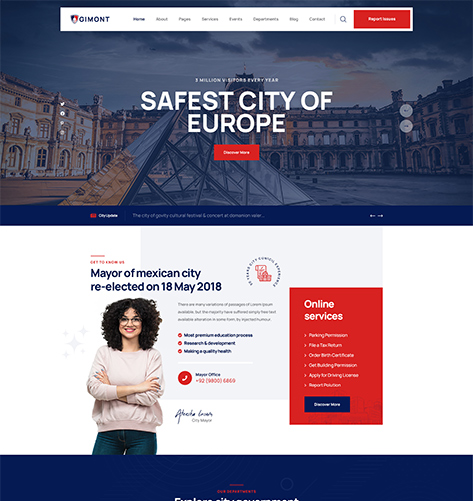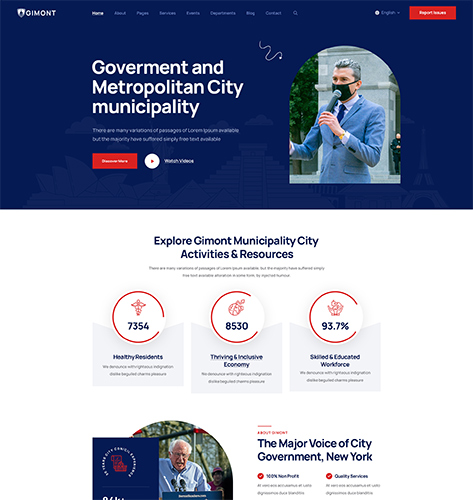- Home
- HOMEPAGE
- WHO WE ARE
- WHAT WE DO
- OUR STRATEGY
Inner Page 1
- PROGRAMMES
- ADVOCACY FOR POLICY AND BEHAVIORAL CHANGE
- ONGOING PROJECTS
- RESEARCH AREAS
- REGIONAL INTEGRATION AND TRADE FACILITATION
- GENDER EQUALITY AND WOMEN EMPOWERMENT
- PRIVATE SECTOR DEVELOPMENT AND ENTREPRENEURSHIP
- PEACE BUILDING AND CONFLICT RESOLUTION
- ECONOMIC AFFAIRS
- HEALTH POLICY AND TECHNOLOGY
- GOVERNANCE, DEMOCRACY AND THE RULE OF LAW
- AGRICULTURE, ENVIRONMENTAL PROTECTION AND CLIMATE CHANGE
- SCIENCES, TECHNOLOGY AND INNOVATION
- CRISIS AND DISASTER MANAGEMENT
- Pages
- PUBLICATIONS
- EVENTS
- RESOURCES
- DONATE
- Events
- Departments
- Documention
- Services
Requirements For Writing Policy Briefs
Title of paper Name of the author(s) Month, Year
Policy briefs are created to provide brief evidence-based overviews and convincing information that urge the reader to make a decision on a particular issue. - Provide enough background for the reader to understand the problem. - Convince the reader that the problem must be addressed urgently. - Provide information about alternatives (in an objective brief). - Provide evidence to support one alternative (in an advocacy brief). Stimulate the reader to make a decision - They are written clearly and precisely - They require thinking beyond the facts: don’t just present statistics and facts – think about what they mean for policy makers, put them in context and interpret them for readers. - When witting a policy brief, do not exaggerate the findings: Do not formulate recommendations that have only limited link with the results of the research. - Endeavor to be clear and concise and use stand-alone documents that focus on a single topic. - Your policy brief should serve as a vehicle for providing evidence-based policy advice to help decision-makers make informed decisions. Always check the relevance of the question. Clearly identify your audience. Specify the message: it is necessary to think about what the key messages of the research are from the perspective of policy makers. - Publication needs to be well argued, easy to read and short: between 1,200 to 2,500 words.
The summary should clearly and precisely highlight the following: - Brief Background of the paper - Expected outcome (s) - Target audience - Methodology used - Main findings - Proposed policy recommendations - Limits of your analysis
This generally includes the following points - The subject of the research, specifying its scope and limits - The current state of the question and the resulting problem, if any, to be solved - The objectives to be achieved - The method to be used - The approach adopted - The structure of the document
Development is normally divided into sections and subsections. It includes: stylized facts, policy options/alternatives and policy recommendations. - Gender mainstreaming: Ask yourself to what extent you want to adopt a transformative approach. Most research fall between the ‘minimal integration’ and ‘transformative integration’ levels, but we sometimes run the risk of falling into the trap of conducting research at the ‘no integration’ level and ignoring gender issues. We must refrain from undertaking or publishing any research that does not take gender issues into account. - No integration: Gender issues (the differentiated and intersectional experience of women, men and groups representing diverse gender identities) are not taken into account in the research project, its conceptualization or its justification. - Minimal integration: Gender issues are taken into account in the justification of the research project, but are not a major concept in its design and methodology. - Partial integration: Gender issues are taken into account in the justification of the research project, its design and methodology. Data are disaggregated by sex, and gender issues are taken into account in the composition of the research team and the choice of reviewers. Partial gender mainstreaming does not (yet) make it possible to analyze gender inequalities and take measures to combat them. - Cross-functional integration: Gender issues are taken into account in the justification, design and methodology of the research project, and rigorously analyzed with a view to informing implementation, communication and influence strategies. Gender mainstreaming does not (yet) make it possible to combat underlying structural factors such as norms and power relations that contribute to gender inequalities. - Transformational integration: Transformative gender mainstreaming examines, analyses and builds an evidence base that paves the way for concrete, long-term changes in power relations, norms, roles and structural gender inequalities. It is intended to lead to sustainable changes through measures (e.g, partnerships, contacts and interventions, particularly with women's rights organizations).
The conclusion is a summary and assessment of the work. It may include the following elements - The aim of the study - The nature and scope of the work - The subjects covered - The problems to be solved - The objectives set - The methods used and data - The approach adopted - The most significant results - Main Policy Recommendations NB: All the references should be hyperlinked
Subscribe to our Newsletter
Our newsletter highlights Africa's economic vulnerabilities, government solutions, and stakeholder engagement.
Quick links
Upcoming Events
Reducing Vulnerability and Driving Prosperity in Africa
© Copyright 2024 | www.cefres.org by CKcreativityDesign












